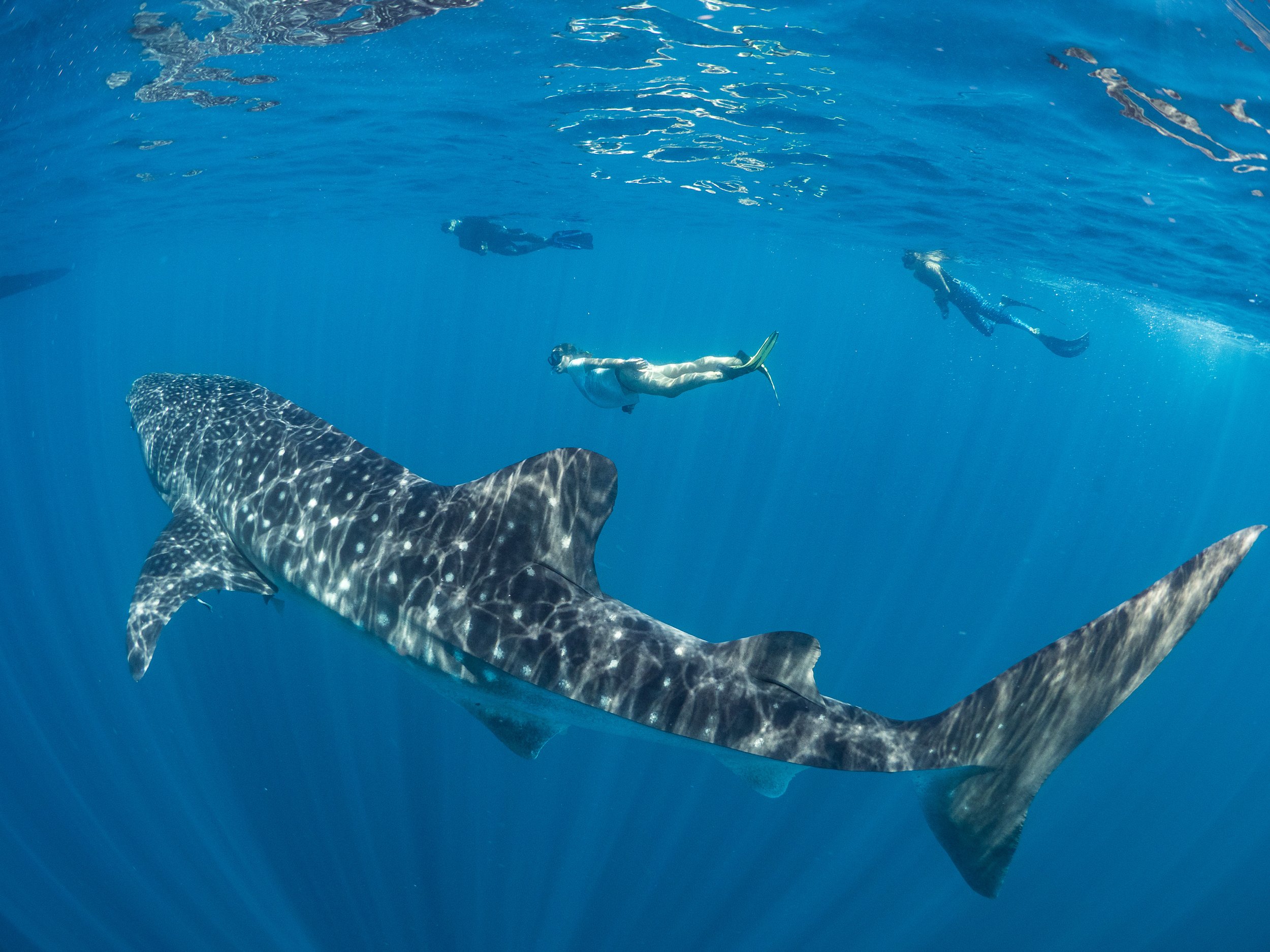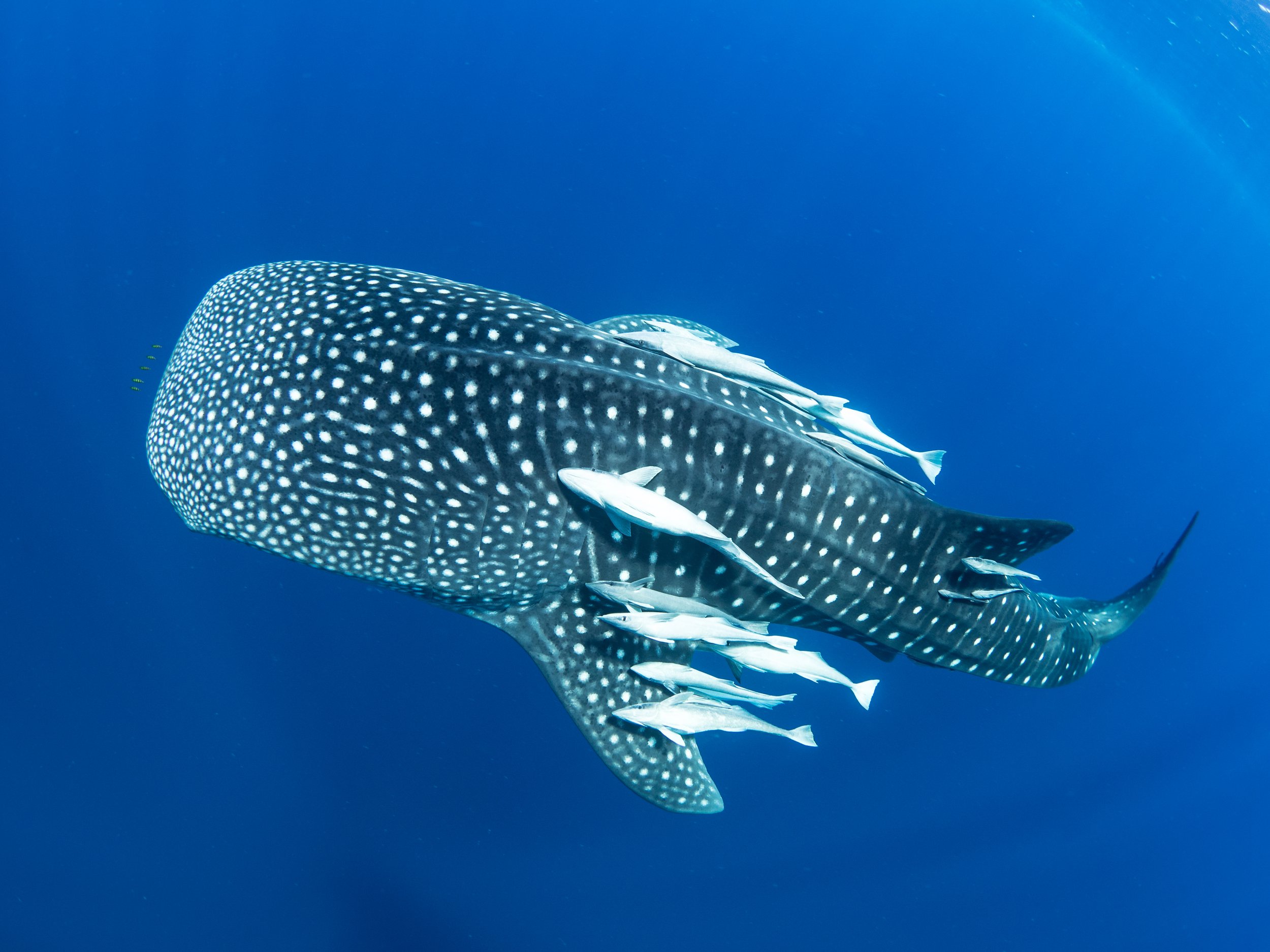
Global Whale Shark Program
The Oman Whale Shark Project
What’s this project about?
Starting in 2010, the Sharkwatch Arabia project has conducted fieldwork and enlisted citizen science contributions to study whale sharks in the Arabian Peninsula region.
One of the key hotspots identified was the Gulf of Oman, where whale sharks are under threat from fisheries and ship strikes. This year, we are starting fieldwork in this area to learn more about the sharks and their conservation needs.
Key Achievement:
Identified Gulf of Oman as a key hotspot for whale sharks.
Established Oman as an IUCN Important Shark & Ray Area
Key Objectives:
Establish high-use areas for whale sharks in the Gulf of Oman, and which sharks are present.
Track the sharks to identify migratory corridors and areas of highest susceptibility to gillnet capture and ship strikes.
Watch
Learn more about the Sharkwatch Arabia team’s previous work work in Qatar
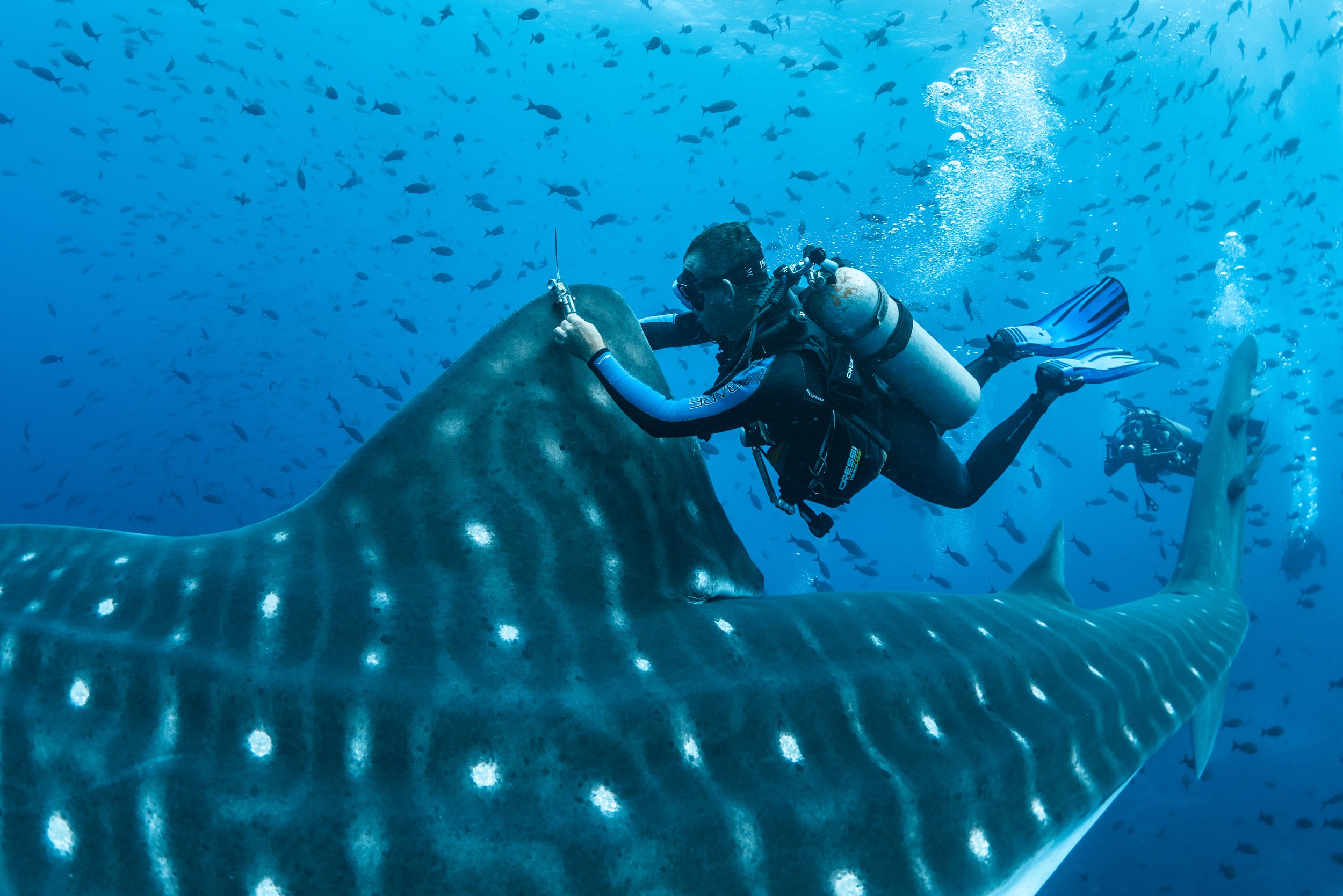
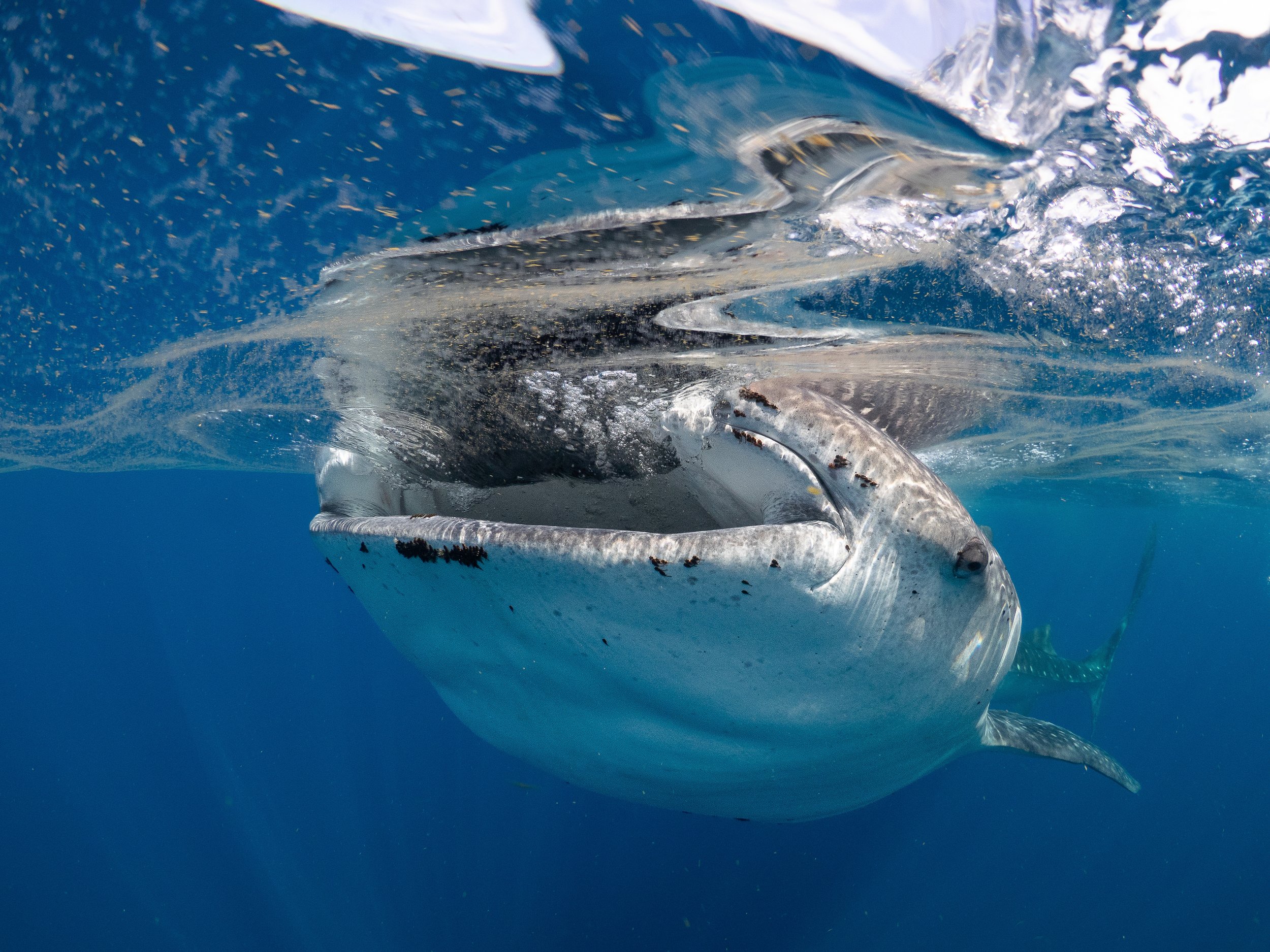
Project Overview.
Oman
Whale Sharks.
This project focuses on understanding the distribution, abundance, and threats faced by whale sharks in the Musandam and Daymaniyat Islands, two key aggregation areas in Omani waters.
Whale Shark Hotspots
These two whale shark hotspots in Oman attract many divers, and since 2009, the Sharkwatch Arabia portal has documented encounters in these areas. To date, 174 whale sharks have been identified in Omani waters, with 58 from the Musandam and 115 from the Daymaniyat Islands. Surface-feeding aggregations of whale sharks are mainly reported between April and October, while satellite-tagged individuals have uncovered additional areas of interest along the northeastern coast of Oman. Together, these data show that a dedicated whale shark research project is warranted in Oman.
Threats to Whale Sharks
Whale sharks globally face threats from fishing, bycatch, ship strike and pollution, and they are listed as Endangered on the IUCN Red List. One of the areas of concern for whale sharks is off Oman, where whale sharks are still fished. Heavy shipping traffic through the Strait of Hormuz is also a likely threat. However, detailed data on their local abundance and distribution and the impacts on their population from threats they face are currently lacking.
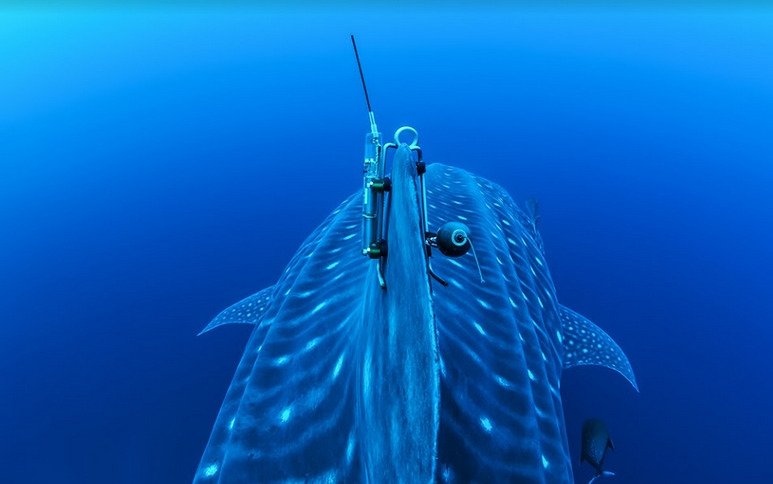
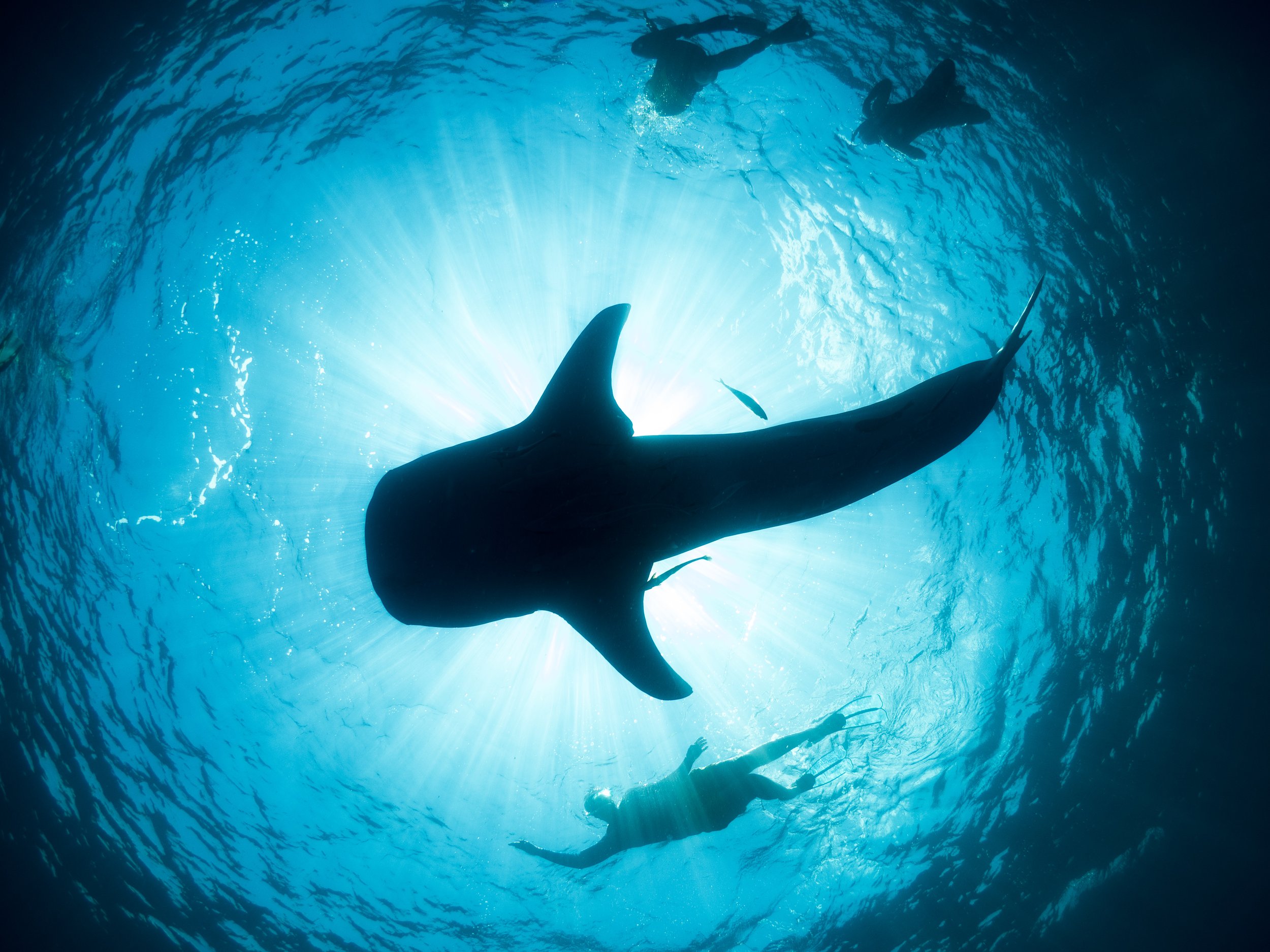
MMF Project Team
-

Dr David Robinson
MMF ASSOCIATE RESEARCHER
David runs the Sharkwatch Arabia initiative and has been monitoring whale shark occurrence in the region for over a decade. He completed his PhD on the topic, conducting extensive field research in Qatar, UAE, and Oman, analyzing whale shark movements and population ecology in the region.
-

Dr Simon Pierce
CO-FOUNDER / PRINCIPAL SCIENTIST
Dr Simon Pierce is a pioneering researcher and global leader in whale shark conservation. Simon co-authored the first-ever scientific textbook on whale sharks in 2021, led the recent global conservation assessment of the species, and serves as a member of the IUCN Shark Specialist Group.
-

Dr Chris Rohner
PRINCIPAL SCIENTIST
Dr Chris Rohner completed his PhD on whale sharks in 2012, the first doctoral study on the species in Africa. Chris is an international expert in satellite tracking, population modeling, and shark ecology.
Media
National Geographic. The Seas of Arabia
Gulf News. Whale shark satellite tagged off Qatar coast
National Geographic. The Seas of Arabia
Times of Oman. Collisions with large vessels may be factor in whale shark population decline
Publications
Diving into the vertical dimension of elasmobranch movement ecology. Andrzejaczek S, Lucas TCD, Goodman MC, et al. Science Advances.
Improving sightings-derived residency estimation for whale shark aggregations: A novel metric applied to a global data set. Araujo G, Agustines A, Bach SS, et al. Frontiers in Marine Science.
Global collision-risk hotspots of marine traffic and the world’s largest fish, the whale shark. Womersley FC, Humphries NE, Queiroz N, et al. Proceedings of the National Academy of Sciences.
Regional variation in anthropogenic threats to Indian Ocean whale sharks. Reynolds SD, Norman BM, Franklin CE, et al. Global Ecology and Conservation.
Global spatial risk assessment of sharks under the footprint of fisheries. Queiroz, N., Humphries, N.E., Couto, A. et al. Nature 572.
Limited latitudinal ranging of juvenile whale sharks in the Western Indian Ocean suggests the existence of regional management units. Prebble CEM, Rohner CA, Pierce SJ, et al. Marine Ecology Progress Series 601: 167-183.
Undersea constellations: The global biology of an endangered marine megavertebrate further informed through citizen science. Norman BM, Holmberg JA, Arzoumanian Z, et al. BioScience. 67(12): 1029–1043.
Some like it hot: Repeat migration and residency of whale sharks within an extreme natural environment. Robinson DP, Jaidah MY, Bach SS, et al. PloS ONE 12: e0185360.
Rhincodon typus. Dulvy NK, Robinson DP, Pierce SJ, et al. In: Jabado RW, Kyne PM, Pollom RA, Ebert DA, Simpfendorfer CA, Ralph GM, Dulvy NK (eds.). The conservation status of sharks, rays, and chimaeras in the Arabian Sea and adjacent waters. Environment Agency – Abu Dhabi, UAE and IUCN Species Survival Commission Shark Specialist Group, Vancouver, Canada 236 pp.
Population structure, abundance and movement of whale sharks in the Arabian Gulf and Gulf of Oman. Robinson DP, Jaidah MY, Bach S, et al. PLoS ONE.

